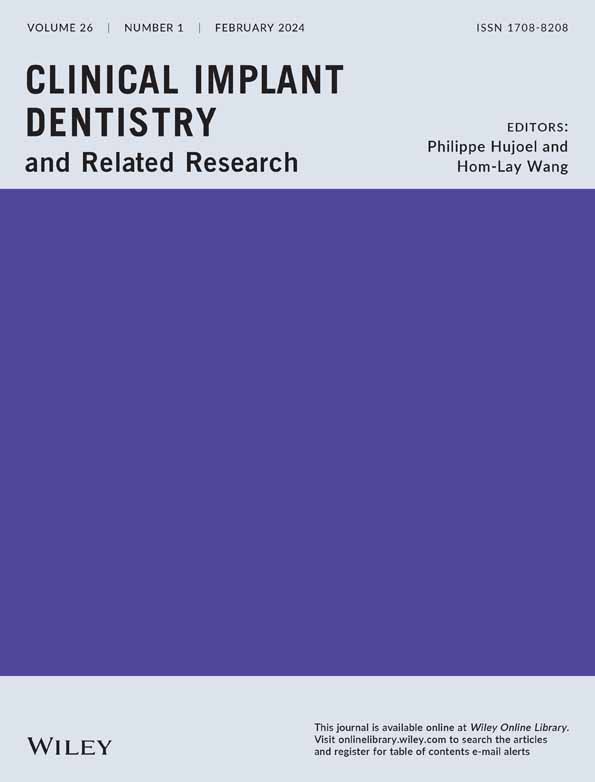Injectable platelet rich fibrin versus hyaluronic acid with bovine derived xenograft for alveolar ridge preservation. A randomized controlled clinical trial with histomorphometric analysis
Abstract
Background
Alveolar ridge preservation (ARP) is a technique that aims to maintain bone volume and minimize resorption after tooth extraction.
Objective
This study aimed to compare the effectiveness of injectable platelet-rich fibrin (I-PRF) versus hyaluronic acid (HA) in combination with xenografts for ARP.
Methods
This randomized controlled trial included 36 patients (20 females and 16 males) who required implant placement in the upper arch. The patients were randomly allocated to one of three groups (n = 12 each): I-PRF with xenografts, HA with xenografts, or xenografts alone. All patients underwent ARP, and the extraction sockets were sealed with a free gingival graft harvested from the palate, a total of 36 implants were inserted. Cone-beam CT scans were performed before and 4 months postoperatively to measure radiographic bone gain as the primary outcome. Clinical parameters, including soft tissue thickness and clinical bone width, were evaluated preoperatively, and at 4 months and 1 year postoperatively. Additionally, histological assessment of core bone biopsies was performed 4 months postoperatively using histomorphometric analysis to determine the percentages of newly formed bone, mature bone, and residual grafts.
Results
Regarding the radiographic bone gain 4 months postoperative the HA group exhibited the highest value (9.78 ± 0.87), which was significantly greater than the values observed in the I-PRF and control groups (8.60 ± 1.27 and 7.99 ± 0.89, respectively) (one-way ANOVA, p = 0.007). Crestal bone loss was significantly higher in the control group (−0.98 ± 0.18) than in the I-PRF group (−0.53 ± 0.11) and HA group (−0.33 ± 0.15) groups (one-way ANOVA, p < 0.001). In the histomorphometric analysis, the mean area fraction of newly formed bone trabeculae was significantly higher in the HA group (56.66 ± 7.35) than in the I-PRF group (28.74 ± 5.15) and the control group (24.05 ± 3.64) (repeated measures ANOVA, p < 0.001). Additionally, the mean area fraction of residual graft material was higher in the I-PRF group (6.76 ± 2.59), followed by the control group (2.71 ± 1.24), while the HA group had the lowest value (2.63 ± 1.27) (Repeated measures ANOVA, p < 0.001).
Conclusion
The combination of HA with xenografts yielded better radiographic and histological outcomes in terms of new bone formation and degree of bone maturation than the I-PRF and control groups. Furthermore, I-PRF improved soft tissue thickness.
Please note that clinical trial registration was not completed prior to participant recruitment and randomization. The registration link for this trial is https://clinicaltrials.gov/ct2/show/NCT05781529.
CONFLICT OF INTEREST STATEMENT
The authors declare no conflicts of interest.
Open Research
DATA AVAILABILITY STATEMENT
The data that support the findings of this study are available from the corresponding author upon reasonable request.




